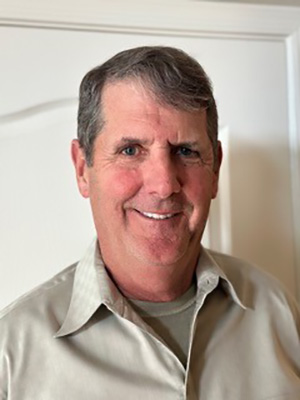Features Articles
 Four important lessons gleaned over a three-decade design career.
Four important lessons gleaned over a three-decade design career.
There’s an old saying among test pilots: “Any landing that you can walk away from is a good landing.” They also know that there are old pilots, there are bold pilots, but no old, bold pilots – or so the saying goes. If you want to hang around as a PCB designer, you can only hope to walk away from your mistakes with your career intact. So, this is a chance to learn from my mistakes from 35 years of design work.
Going all the way back to the ’90s finds me in my first PCB design role. I had just taken an internal transfer to the commercial side of the business after a couple of years of feeding from the government trough. My manager on the mil-spec side, Merrill, was a father of a dozen children and was an all-around nice guy, perhaps a bit of a pushover.
Before applying for the transfer, I wanted to talk with Merrill, so I came up behind him and asked if he wanted to go to Armadillo Willy’s, a local barbecue place, for lunch. I didn’t see that he had a sandwich in his hand and was about to take the first bite. Instead, the sandwich hit the desk with a thunk, and we were off to the restaurant. Such was his dedication to his people.
 Wise use of AI could be the key to our sustainability and survival.
Wise use of AI could be the key to our sustainability and survival.
AI is the technology of the day, and I have commented positively on its properties and potential many times in this column. Building AI into new products and services has become a marketing prerequisite. AI applications in the cloud offer easy access and fast answers to complex computing challenges, delivering great value for commercial organizations and novel services for consumers. And in devices such as PCs, smartphones and wearables, AI is the critical ingredient to enable the kinds of intuitive, human-like interactions people want to have with their tech today.
The AI in our smartphone cameras knows what our photographs should look like and adjusts the settings accordingly – a process that would take experts several minutes using Lightroom now happens inside our phones in milliseconds before we even see the picture. We even have bicycles that can warn the rider of a puncture with a tiny inertial sensor that integrates machine learning to monitor handling, giving the safety of a tire-pressure monitoring system (TPMS) without the expense of tire-pressure sensors.

A comprehensive website is a salesperson’s best friend. So why don’t more EMS companies have one?
I read an article reposted on LinkedIn where a buy-side (pay-to-play) consulting group demeaned the EMS industry salesperson’s communication skills and blamed them for the dysfunctions within our industry. The premise was that, because Covid prohibited face-to-face engagements, the business development person’s lack of digital communications and their inability to redirect their sales efforts digitally were a root cause for woes in our industry today.
The EMS industry has been slow to embrace the digital world. But to assert that corporate digital dysfunction is an individual salesperson’s issue implies that one’s own accounts on LinkedIn, Facebook and X (Twitter) will drive enough deals to shore up a flat or declining EMS business. While I encourage my clients’ sales teams to utilize these platforms for various communications, gaining industry knowledge, networking and infrequent lead generation, they make up a tiny element of what an EMS company should undertake to optimize its digital sales opportunities and boost a sales process that even now has somewhat limited face-to-face engagements. Does your EMS company suffer from elements of this discussion? Let’s start a corrective action process.

Accounting for the assembly process will put your design on the fast track.
Thought-provoking questions keep coming my way, and then it’s down the old rabbit hole. So it goes something like this: “How do we integrate so many different parts in such a small PCB area?” The answer is a little deeper than the geometry of Tetris, but that’s a good illustration of packing the available space. This, of course, starts with the CAD symbol library and manifests in the assembly yields at the factory. We have to connect those dots.
Once the PCB logic is sufficiently captured, placement studies can start. Pay attention to the spacing and orientation of components. The interrelationships of neighboring parts can affect the solderability of the overall PCB. The assemblers like to see a consistent rotation of the components and an even distribution across the board.
It’s unlikely that every device on the board will be able to meet that preference. The electrical performance is going to take priority in several cases, particularly with analog designs. That said, you can still pick an orientation that suits most components. The similarity will inform the manufacturing engineer how the board should travel along the placement machinery and guide the soldering process.

The smartwatch has lived up to the hype. Can other wearable technologies follow its lead?
Will wearable technology ever realize its potential? Exciting technical innovations that should succeed often disappoint commercially, failing to take off for reasons that can be difficult to define.
Some forecasters would already have us walking around in clothing made from smart textiles that can monitor vital signs such as respiration and body temperature, track sports performance or fatigue levels, or assist treatment such as posture correction or physiotherapy. On the other hand, we could be routinely interacting with the world through AR glasses that overlay everything we need to know, wherever we are, minute by minute, and record our experiences wherever we go. And perhaps our wearables should be battery-free, powered by energy-harvesting technologies that can turn movement, daylight, or even the difference between hot and cold, into enough electrical energy to keep us connected all the way to the furthest extremities of the grid.
While these all have their place in the modern world – augmented reality is making inroads in industrial scenarios such as on production lines and in vehicle maintenance, and controls powered by ambient energy have been commercialized for smart-building applications – the massive, all-pervading adoption within consumer markets has not come about.

With more supply chain crises brewing, be proactive in your preparations.
The various issues that have beleaguered the supply chain, and those companies and individuals that rely on it, continue to baffle me. I fully understand that when Covid emerged on the scene, especially as quickly as it did a few years ago, the global supply chain, as well as so many other aspects of our “normal” life, came to a grinding halt. But that was then, and this is now, so I cannot stop thinking, “What does this all mean?”
That companies were forced to shut down, whether partially or completely, for lengthy periods of time while the pandemic was in full rage is understandable. Safety of employees and the fear of what might or could or is happening to public health have a way of moving to center stage in people’s minds and habits, regardless of where they live or what they do for a living. It was understandable that shortages occurred with factories’ production levels slashed for the health and safety of employees.
Press Releases
- Sharpen Your ESD Skills: CE3S Announces Desco’s First ANSI/ESD S20.20 Training Series for 2026
- Mycronic Secures Turnkey Solution Order from a Nordic Defense Actor
- Altus Partners with Sellectronics to Enhance Manufacturing Capabilities with PVA Delta 8 System
- ITW EAE Celebrates Major Milestone in Domestic Manufacturing Expansion


